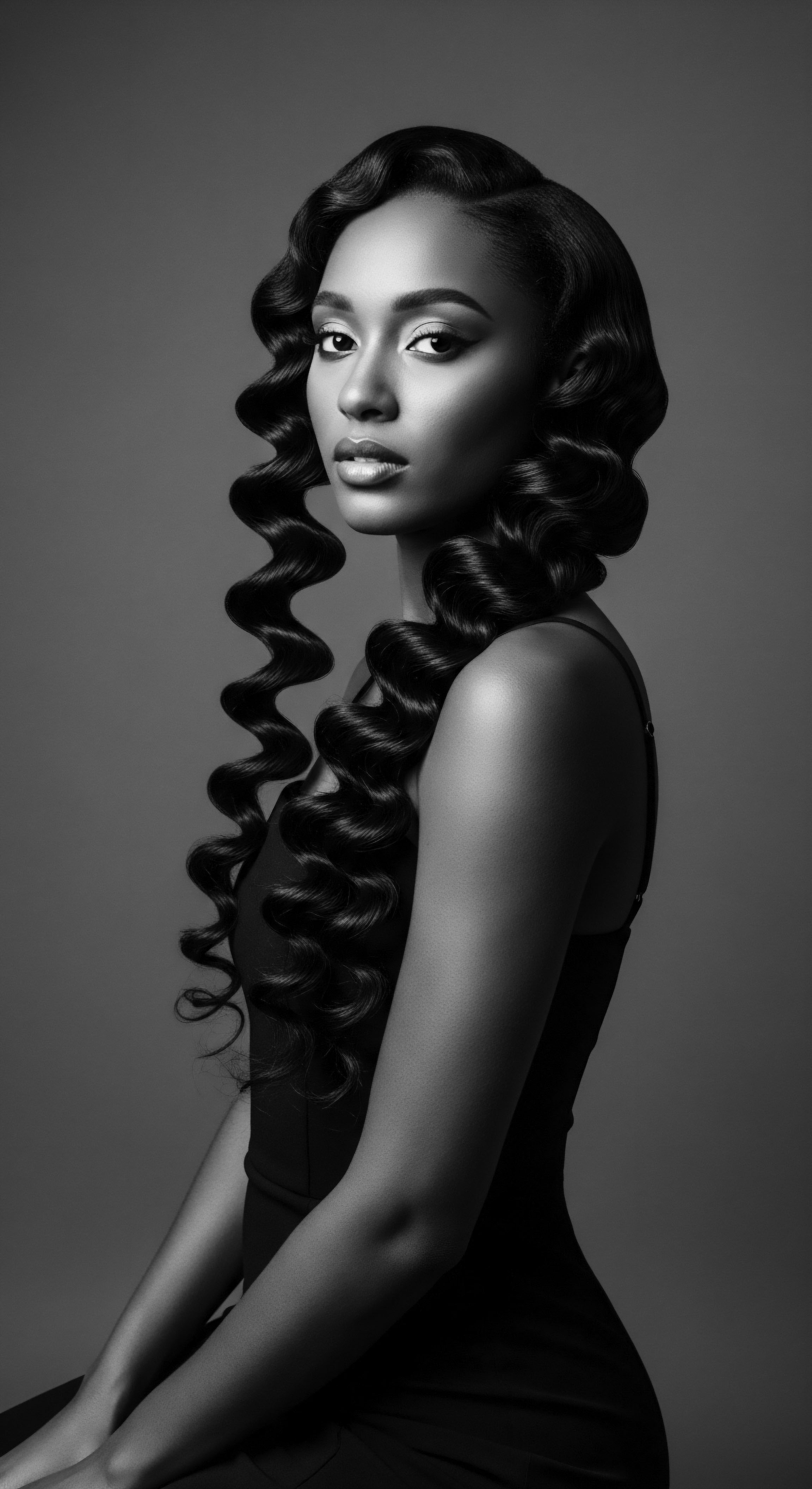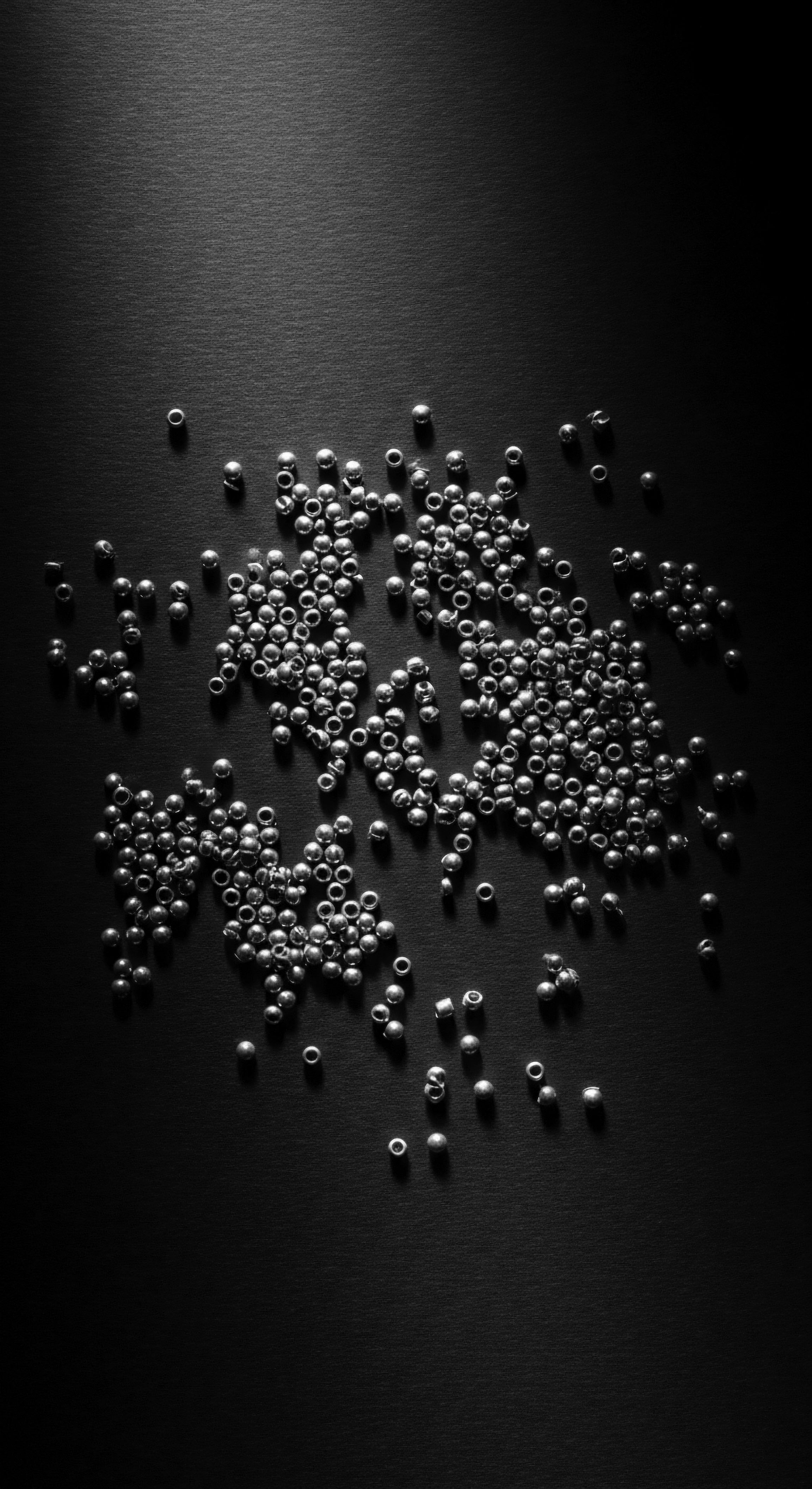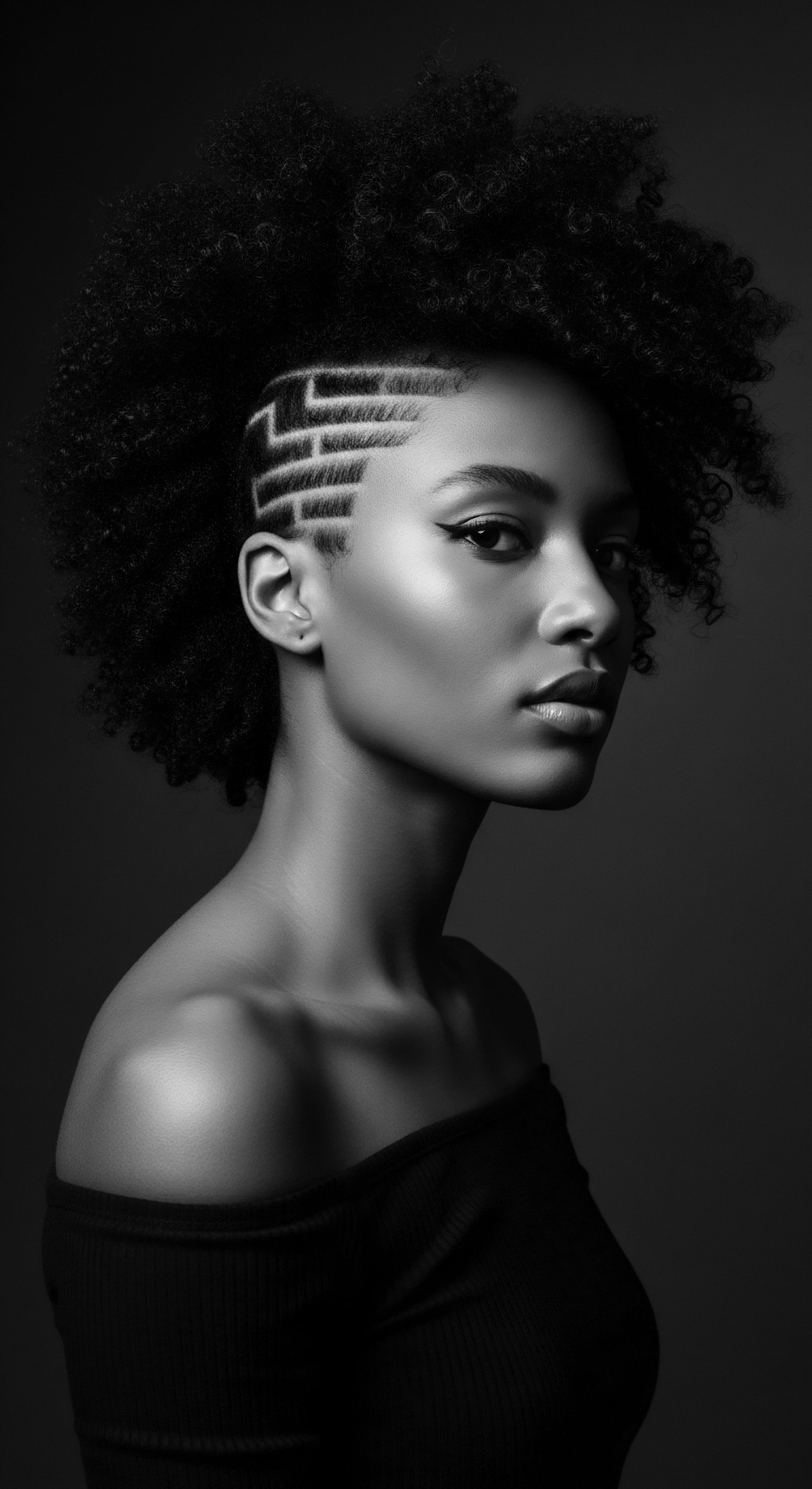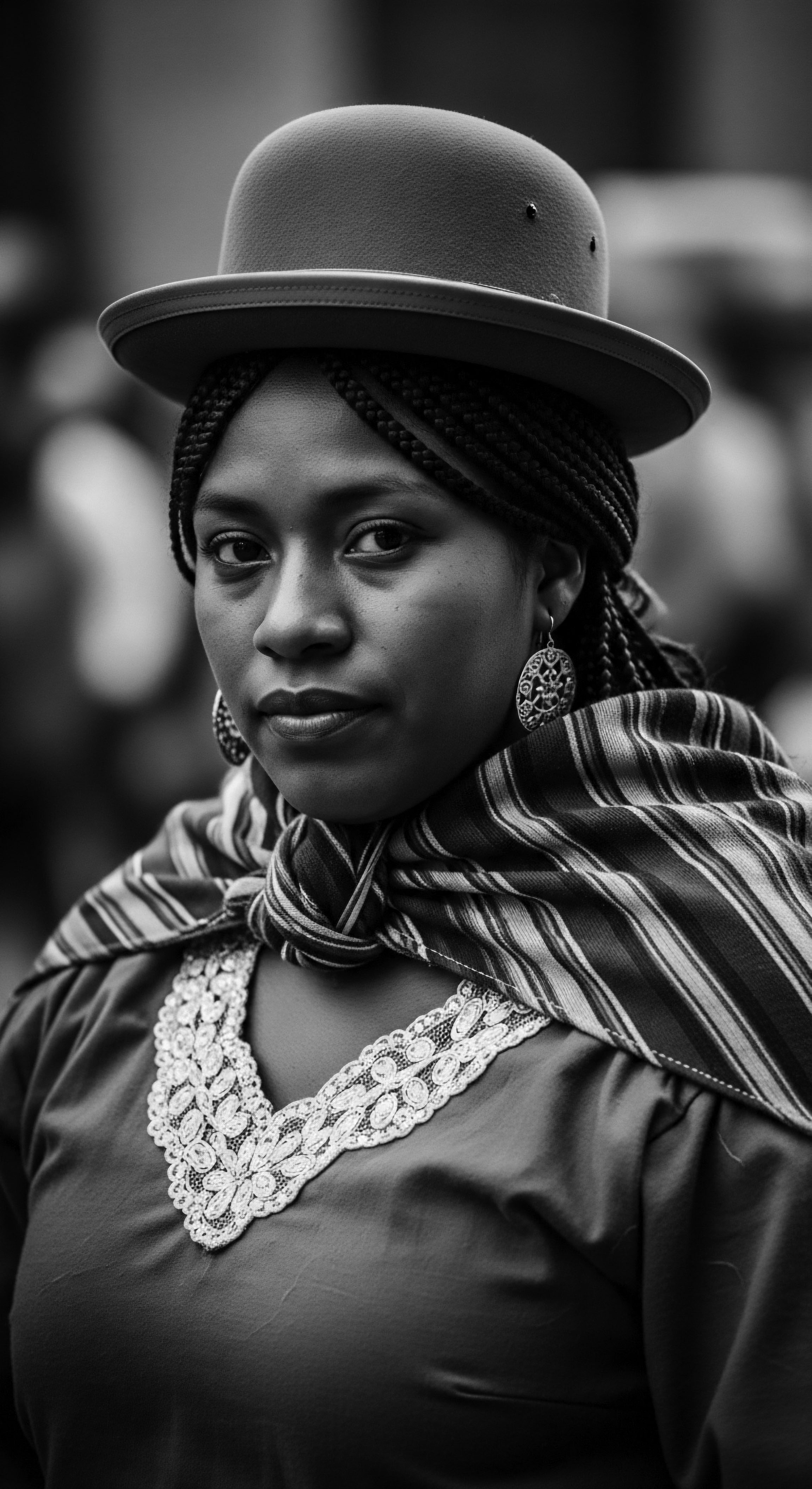
Roots
In the vibrant expanse of human expression, few aspects hold as much meaning and cultural depth as textured hair. For those whose strands coil with the inherited wisdom of ancestors, hair is more than keratin and pigment; it is a living chronicle, a vessel of history, identity, and profound care practices. To understand the gentle balms and potent oils that traditionally soothed irritated textured scalps across Africa is to step into a lineage of deep knowledge, a wisdom passed down not through written decree, but through touch, through ritual, and through the very earth itself. It is a heritage of nurturing, of finding solace in the bounty of the land, a connection to the rhythms that shaped lives and communities for millennia.

Ancestral Scalp Care and Textured Hair Biology
To appreciate the traditional African oils used for scalp irritation, one must first grasp the unique biological architecture of textured hair and the ancestral understanding that informed its care. Hair anatomy, regardless of texture, begins with the hair follicle, a tiny organ nestled within the skin of the scalp. It is here that the hair shaft begins its journey. For textured hair, particularly coily and kinky patterns, the follicle is often curved or elliptical, influencing the helical shape of the hair strand itself.
This coiling nature means fewer cuticle layers lie flat against the hair shaft, making textured hair inherently prone to dryness and more susceptible to environmental factors that can lead to irritation. The natural oils produced by the scalp, known as sebum, struggle to travel down these helical strands, leaving the lengths drier and the scalp sometimes needing additional moisture. This inherent dryness, coupled with the need for specific styling methods, made scalp health a paramount concern in traditional African hair care.
Ancestral wisdom recognized textured hair’s propensity for dryness and inflammation, guiding traditional scalp care practices rooted in the continent’s abundant plant life.
Centuries ago, communities across Africa observed these characteristics not through microscopes, but through lived experience and keen observation. They understood that a healthy scalp was the bedrock of healthy hair. Irritation, flaking, or discomfort were signals to be addressed with nature’s provisions. This intuitive understanding formed the basis of what we might now call an indigenous trichology, a knowledge system honed over generations.
They did not categorize hair types by numerical systems as modern practices often do; rather, they understood hair in terms of its needs, its resilience, and its connection to the individual’s spiritual and communal life. Each application of oil, each styling choice, carried significance that went beyond mere aesthetics.

Traditional Classification of Hair Needs
While formal classification systems are a modern construct, traditional African societies possessed their own intricate ways of understanding hair. These weren’t about numerical scales, but about qualitative descriptions linked to health, appearance, and indeed, spiritual or social meaning. For example, hair that was “thirsty” or “unruly” was understood to be in need of emollients and softening agents. Hair that “ached” or “itched” called for soothing, healing applications.
This practical, symptom-based understanding allowed for effective, localized treatments using readily available plant resources. The wisdom behind these practices was often woven into the very fabric of daily life and communal gatherings. As Byrd and Tharps (2014) point out, hair served as a visual marker of identity, communicating age, wealth, profession, relationship status, and religion in ancient African societies. The care given to hair was thus deeply intertwined with personal and communal well-being.
The lexicon of textured hair care, in its traditional form, involved terms that described the state of the scalp and hair in intimate, often poetic ways. It spoke of vitality, protection, and connection to the spirit. The very process of hair dressing, which could take hours or even days, became a moment of shared conversation, storytelling, and the transmission of knowledge, including remedies for a distressed scalp.

The Cycles of Growth and Ancestral Influences
Hair grows in cycles—anagen (growth), catagen (transition), and telogen (rest). This fundamental biological process is universal. However, factors like nutrition, environmental conditions, and stress can influence these cycles. Ancestral diets in various African regions, often rich in diverse plant foods, would have naturally supplied many of the vitamins and minerals now known to aid hair and scalp health.
The rhythmic nature of agricultural cycles, the seasonal availability of plants, and the communal practices surrounding harvesting and preparation of these plant-derived oils all played a part in a holistic hair care regimen that responded to the hair’s natural cycles and the body’s needs. The careful application of oils supported the hair shaft from its emergence, providing lubrication and protection, and addressing any scalp distress that could impede healthy growth.

Ritual
The care of textured hair in African societies was never a solitary, fleeting act; it was a deeply ingrained ritual, a communal gathering, a sacred performance. Oils, extracted with ancient techniques from the continent’s diverse plant life, were central to these practices, acting not merely as conditioners but as conduits for ancestral connection, social bonding, and physical well-being. These oils became integral to styling, transforming hair from its raw state into expressions of identity, status, and artistry. The application of these nourishing balms was often accompanied by storytelling, songs, and the gentle rhythm of hands tending to hair, weaving a legacy that continues to resonate today.

Oils in Protective Styling Heritage
Protective styles, designed to shield delicate textured hair from environmental damage and manipulation, possess a long and storied history in Africa. From intricate cornrows to robust braids, these styles provided practical benefits alongside their aesthetic and communicative power. The application of African oils was an indispensable step in preparing hair for these styles and maintaining scalp health during their wear.
These oils lubricated the strands, making them more pliable for braiding and twisting, and they sealed in moisture, which was vital for preventing dryness and breakage beneath the protective encapsulation. The use of oils in this context highlights a deep, inherited understanding of hair mechanics, long before modern science articulated the concept of hygral fatigue.
For example, Chebe Powder, traditionally used by women of Chad, is mixed with oils to create a paste applied to the hair. This practice is renowned for helping to retain moisture, reduce breakage, and strengthen hair strands, contributing to impressive length retention. The oils blended with Chebe provide deep conditioning and help balance the scalp’s pH, offering anti-inflammatory properties that calm irritation.
- Shea Butter ❉ Extracted from the nuts of the Karité tree in West Africa, shea butter has been a cornerstone of hair care for centuries. Its rich fatty acid composition and anti-inflammatory properties make it an exceptional moisturizer and a soothing balm for irritated scalps, reducing redness and flaking without clogging pores.
- Marula Oil ❉ From the kernels of the Marula tree, native to Southern and Eastern Africa, this oil is a lightweight yet potent moisturizer. It absorbs readily, making it suitable for scalp massages to address dryness and flaking, while providing hydration and shine.
- Baobab Oil ❉ Derived from the majestic Baobab tree, often called the “Tree of Life,” this oil boasts anti-inflammatory properties that calm the scalp, reducing irritation. Its richness in vitamins A, D, E, and F, alongside omega fatty acids, ensures deep hydration and strength for dry, brittle hair.

Traditional Methods of Natural Styling and Scalp Balance
Beyond protective styles, African oils were central to everyday natural hair care, helping to define curl patterns, add luster, and maintain scalp equilibrium. The art of natural styling was not about altering the hair’s inherent texture, but rather about enhancing its natural beauty and ensuring its well-being. These traditional methods often involved meticulous hand application, massaging the scalp to stimulate circulation and ensuring the oils reached the skin where irritation might begin. The hands of a mother, aunt, or community elder often administered these treatments, imbuing the act with affection and shared knowledge.
Consider the use of Castor Oil, particularly Jamaican black castor oil, which has deep roots in African diaspora hair practices. Its thick consistency and purported ability to improve blood circulation to the scalp made it a favored choice for scalp massages, promoting healthy growth and helping to alleviate dryness and flakiness. The traditional burning of castor seeds in its preparation for Jamaican black castor oil adds a unique ash content believed to enhance its efficacy for scalp health.
African oils were not mere cosmetics; they were foundational elements of traditional hair care, supporting both aesthetic expression and scalp health within intricate cultural practices.
The wisdom embedded in these methods recognized that a hydrated scalp was less prone to itching, flaking, and discomfort. The oils provided a physical barrier, sealing in moisture and protecting the scalp from harsh environmental elements like sun and dry air. This natural conditioning also made hair more manageable, allowing for various manipulations without causing undue stress or breakage. The objective was healthy, supple hair that reflected care and community values.
| Traditional African Oil Shea Butter (Karité) |
| Primary Scalp Benefit in Heritage Practices Soothing irritated, dry scalp; providing deep moisture. |
| Modern Scientific Understanding Rich in fatty acids (oleic, stearic, linoleic), vitamins A and E, and anti-inflammatory compounds like triterpenes. Reduces redness and itching. |
| Traditional African Oil Marula Oil |
| Primary Scalp Benefit in Heritage Practices Light hydration for scalp; reducing flakiness. |
| Modern Scientific Understanding Composed of oleic and linoleic acids, procyanidin, flavonoids, and antioxidants (Vitamin E, C). Non-comedogenic, hydrating, and anti-inflammatory. |
| Traditional African Oil Baobab Oil |
| Primary Scalp Benefit in Heritage Practices Calming irritated scalp; nourishing; improving resilience. |
| Modern Scientific Understanding Abundant in vitamins A, D, E, F, and omega-3, -6, -9 fatty acids. Possesses anti-inflammatory and antioxidant properties that support scalp health and reduce irritation. |
| Traditional African Oil Black Seed Oil (Nigella Sativa) |
| Primary Scalp Benefit in Heritage Practices Addressing various scalp issues like dandruff and itchiness; promoting healthy scalp environment. |
| Modern Scientific Understanding Contains thymoquinone, with antioxidant, anti-inflammatory, and antimicrobial effects. May combat fungal and bacterial scalp conditions. |
| Traditional African Oil Castor Oil (including Jamaican Black) |
| Primary Scalp Benefit in Heritage Practices Moisturizing dry scalp; stimulating circulation; protecting against infection. |
| Modern Scientific Understanding Rich in ricinoleic acid, a humectant that attracts moisture. Has anti-inflammatory, antifungal, and antibacterial properties, creating a healthier environment for follicles. |
| Traditional African Oil Moringa Oil |
| Primary Scalp Benefit in Heritage Practices Nourishing scalp; reducing dryness and irritation; supporting hair growth. |
| Modern Scientific Understanding High in oleic acid, behenic acid, and antioxidants (Vitamins A, C, E). Anti-inflammatory and antimicrobial properties calm inflamed scalp. |
| Traditional African Oil These oils embody a continuum of ancestral wisdom, their traditional uses aligning with contemporary scientific understanding of their dermatological benefits for the scalp. |

The Role of Hair Tools and Oils in African Hair Heritage
The toolkit of African hair care was simple yet effective, each item playing a specific part in the grand ritual of hair dressing. Combs carved from wood, pins made of bone or metal, and various adornments all worked in tandem with the oils to create the desired styles. The repeated act of finger-combing, coupled with oil application, distributed nourishment evenly and provided gentle massage that surely aided scalp comfort. Even the communal activity of braiding, which dates back to at least 3500 BC (BLAM UK CIC, 2022), involved the consistent application of oils to keep the hair pliable and the scalp soothed during the long hours spent in shared artistry.
The journey of hair care, from the preparation of the oils to their careful application and the styling that followed, became a conduit for passing down cultural values, familial bonds, and specialized knowledge. The oils, then, were not just biochemical agents; they were part of a living tradition, a connection to the hands that came before, and the stories they told through every strand.

Relay
The legacy of African oils for textured hair and scalp health continues to transmit its power through generations, a relay of wisdom spanning millennia. This relay is not simply about preserving practices, but about understanding their underlying efficacy, connecting ancestral wisdom with contemporary scientific inquiry. It requires a thoughtful examination of how these traditional remedies address common scalp concerns, moving beyond surface-level application to a deeper, more informed appreciation of their properties and their enduring place in hair care heritage.

Designing Regimens Inspired by Ancestral Insight
Formulating a personalized hair care regimen for textured hair, especially for irritated scalps, finds profound inspiration in ancestral practices. The cornerstone of these historical approaches was observation and responsiveness to the hair and scalp’s immediate needs. This meant understanding the rhythm of cleansing, moisturizing, and protecting, often using what the local environment provided.
For example, communities would adjust their use of oils based on seasonal dryness or specific scalp conditions. This intuitive, adaptive method contrasts sharply with a rigid, one-size-fits-all approach, pointing towards a more responsive and mindful way of caring for the scalp.
A key aspect of this ancestral blueprint involves selecting oils with properties that directly address inflammation, dryness, and barrier function. Many traditional African oils possess these attributes. For instance, the anti-inflammatory capabilities of black seed oil , with its main active ingredient thymoquinone, are documented to soothe irritated scalps and aid against conditions like scalp inflammation, even showing efficacy comparable to certain pharmaceutical treatments for eczema in clinical trials. (Aventus Clinic, 2025) Such research validates centuries of traditional application, confirming the empirical success of these plant-derived treatments.
An effective regimen today can integrate these insights by layering products, starting with scalp cleansing, moving to targeted oil application, and then sealing in moisture. The very act of massaging oils into the scalp, a common ancestral practice, supports blood circulation to the hair follicles, thereby encouraging a healthier scalp environment and promoting hair growth.
African oils offer a potent blend of historical efficacy and contemporary scientific validation for nurturing textured scalps.

Nighttime Sanctum and the Wisdom of Protection
The protection of hair during sleep is a practice deeply rooted in African heritage, a testament to a long-standing understanding of hair’s fragility and the importance of preserving moisture and preventing friction. This is where the wisdom of the bonnet and the silk scarf converges with the consistent application of African oils. Before the advent of mass-produced bonnets, various headwraps and coverings served a similar purpose, safeguarding elaborate hairstyles and nourishing scalp treatments overnight. The oils applied in the evening continued their work throughout the night, soothing the scalp and hydrating the hair, creating a nocturnal sanctuary for repair and replenishment.
The practice of oiling the scalp before bedtime allows therapeutic properties of oils like Moringa Oil or Black Seed Oil to be absorbed over an extended period. Moringa oil, rich in oleic and behenic acids, deeply moisturizes the scalp and smoothes the hair cuticle, combating dryness and irritation that can lead to flaking. Black seed oil’s antioxidants and fatty acids further contribute to a healthy scalp environment, reducing itchiness and dryness.

Traditional Ingredients and Their Contemporary Relevance
The traditional African pharmacopoeia for hair and scalp care is a vast treasury of plants, each offering specific benefits. Many of these ingredients are now gaining wider recognition in modern cosmetic science, reaffirming the knowledge passed down through generations. The synergy between their historical applications and current scientific understanding is compelling.
Consider the diversity of traditional African plant-based ingredients:
- Chebe Powder (Chad) ❉ A mixture of croton, cherry seeds, cloves, and other plant materials. Traditionally mixed with oils and applied to hair to reduce breakage and maintain moisture, aiding in scalp health.
- African Black Soap (West Africa) ❉ Made from the ash of locally harvested plants like cocoa pods and plantain skins, combined with oils like shea butter. Used for deep cleansing of hair and scalp, addressing conditions like dandruff.
- Ghee (Ethiopian Communities) ❉ Clarified butter, traditionally applied to hair for conditioning and maintenance. While primarily a food, its fatty acid content would have provided moisturizing benefits.
- Rooibos Tea (South Africa) ❉ Beyond a beverage, it possesses antimicrobial and antioxidant properties, which could support a healthy scalp environment and growth.
The ongoing scientific exploration of these traditional ingredients often seeks to isolate active compounds and understand their mechanisms of action, yet the ancestral approach often involved the whole plant, recognizing the holistic synergy of its components. Ethnobotanical studies, though often limited on hair care specifically, are beginning to bridge this knowledge gap, validating the efficacy of many species used for scalp health, alopecia, and other conditions. (MDPI, 2024)

Scalp Problem Solving in the Heritage Context
Irritated textured scalps present specific challenges, including dryness, flaking, itching, and sometimes even scalp infections. Traditional African practices addressed these issues directly, often with remedies that combined moisturizing, anti-inflammatory, and antimicrobial properties. The aim was to restore balance to the scalp, allowing for healthy hair growth and comfort. The understanding that certain oils could calm inflamed skin, combat microbial imbalances, and provide lasting hydration was not theoretical, but lived and observed.
For instance, black seed oil’s antifungal and antibacterial properties made it a historical choice for addressing dandruff and other scalp conditions. Its ability to fight free radicals also means it can guard the scalp from damage, promoting overall health. Similarly, shea butter’s anti-inflammatory nature helps to reduce redness and irritation, offering healing effects without pore clogging.
The wisdom of these ancestral solutions lay in their accessibility and their gentle yet effective nature. They often involved consistent, mindful application, becoming a ritual of care that extended beyond immediate symptom relief to overall scalp and hair well-being. This holistic understanding recognized the interconnectedness of hair health with the body’s entire system.

Hair Health and Ancestral Wellness Philosophies
The pursuit of radiant hair in African heritage is inseparable from a broader philosophy of holistic well-being. Scalp health was not viewed in isolation, but as a reflection of internal balance and harmony with one’s environment. Traditional wellness philosophies often emphasized proper nutrition, hydration, and a connection to nature’s healing powers.
The oils applied to the scalp were seen as a form of topical nutrition, drawing from the earth’s vitality to nourish the very root of the hair. (MDPI, 2024)
This ancient wisdom highlights the understanding that discomfort or irritation on the scalp could signal an imbalance within the body or a disharmony with one’s surroundings. Thus, solutions were often multi-faceted, involving not only external application of oils but also considerations of diet, lifestyle, and spiritual alignment. The act of communal hair care itself served as a social and psychological balm, reducing stress and fostering a sense of belonging, both of which are critical for overall wellness and, by extension, scalp health.
The historical journey of African hair care, therefore, extends beyond the mere application of oils. It encompasses an entire worldview where hair is revered, protected, and intimately connected to the spirit, the community, and the ancestral past. The oils traditionally used for irritated textured scalps are a tangible link to this deep well of inherited wisdom, offering not just physical relief but a profound connection to a rich cultural heritage.

Reflection
The journey through African oils traditionally used for irritated textured scalps reveals more than a collection of botanical remedies; it unveils a vibrant, living archive of resilience, resourcefulness, and profound connection to the land. Each application of shea, each massage with marula, each soothing touch of black seed oil carries the resonance of countless generations. These are not merely ancient practices, but enduring testaments to an ancestral ingenuity that understood the subtle language of the scalp and the profound needs of textured hair.
The wisdom gleaned from these traditions continues to echo in our present moments of care, reminding us that true well-being stems from a harmonious relationship with our inherent nature and the gifts of the earth. In every drop, a story is held, a legacy shared, and a promise for vibrant hair, tended with the soul of a strand.

References
- Aaron Wallace. (2023). 10 Benefits of Using Black Seed Oil on Afro Textured Hair.
- Africa Imports. (n.d.). Traditional African Secrets For Long And Healthy Hair.
- Aventus Clinic. (2025). Black Seed Oil for Hair Growth & Scalp Health.
- Bebrų Kosmetika. (2024). The Power of Hair in African Folklore ❉ Rituals and Traditions.
- Byrd, A. D. & Tharps, L. D. (2014). Hair Story ❉ Untangling the Roots of Black Hair in America. St. Martin’s Griffin.
- GF Fabulosity. (2024). Natural anti-inflammatory and antioxidant Baobab Oil for healthier scalp.
- Glimja. (n.d.). Marula Oil 100% Pure Cold Pressed – African Miracle.
- Healthline. (2018). Shea Butter for Hair ❉ Raw, Hair Growth, and Natural Hair.
- Healthline. (2019). Is Black Seed Oil Good for Hair?
- Healthline. (n.d.). Marula Oil Benefits, Uses, and Precautions.
- Hims. (2025). Shea Butter for Hair and Scalp Health.
- KhalidaNaturals. (n.d.). Kinky Hair Growth Oil (West African Batana Oil).
- MDPI. (2024). Cosmetopoeia of African Plants in Hair Treatment and Care ❉ Topical Nutrition and the Antidiabetic Connection?
- Natural Poland. (2023). Moringa Oil in Africa ❉ Harnessing a Miraculous Superfood for Nutrition, Skincare, and Wellness.
- Nyraju Skin Care. (n.d.). A How-to Guide for African-American Hair Growth Using Essential Oils.
- Pydana Collection. (2021). The 411 on a Superstar Natural Hair Ingredient ❉ Marula Oil.
- ROJH. (2024). The Power of Black Seed Oil ❉ A Guide to Hair Oiling.
- Sellox Blog. (2021). Ancient African Hair Growth Secrets For Healthy Hair.
- TERMIX. (2022). Shea butter benefits for hair.
- The Times of India. (2024). How to consume Moringa for hair growth.
- Vaughan’s Holistic Hair Clinic & Wellness Spa. (2024). Black Hair Growth ❉ A Comprehensive Guide.
- Wimpole Clinic. (n.d.). Black Seed Oil for Hair ❉ Benefits, Risks and Alternatives.
